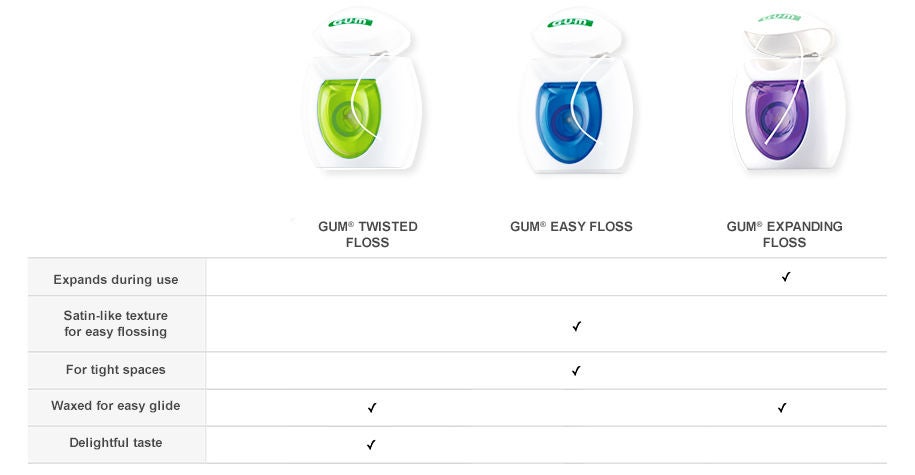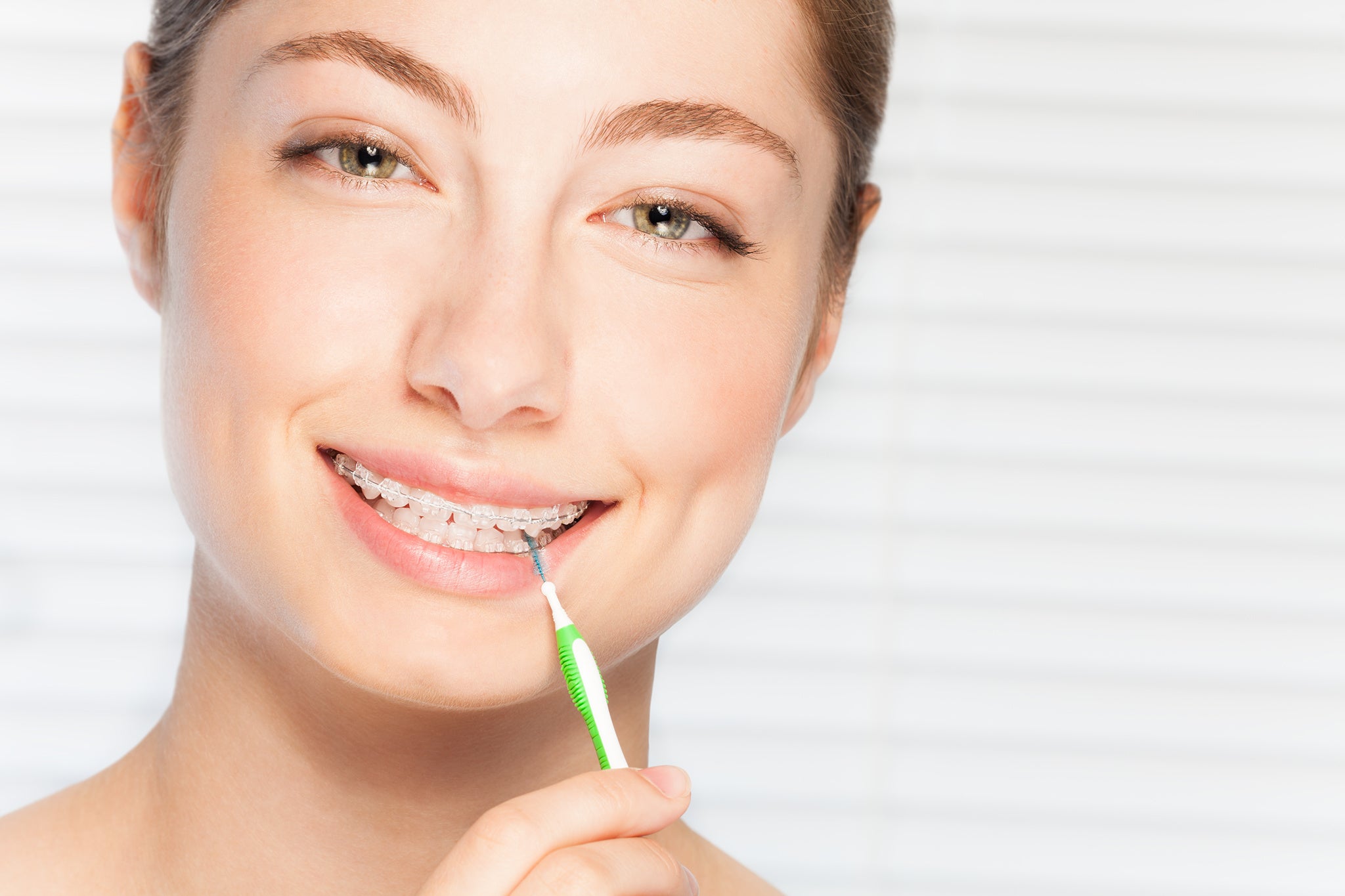
Flossing 1:1 When and How to Get Started
Despite its established importance, getting the general population to practise healthy interdental cleaning using methods like flossing remains one of the greatest challenges in contemporary dental care.
Less than 30% of the population of Europe estimated to floss or practise any kind of regular interdental cleaning, according to consumer research conducted by SUNSTAR Europe in 2018.

This lack of compliance is a major health challenge that must be addressed. Failing to practise regular interdental cleaning can lead to serious, expensive, and wide-ranging adverse health effects. Not only can it put people at risk for gum disease and losing teeth, but it can even increase risk of Alzheimer’s, diabetes, cardiovascular disease, and more.
The most frustrating element of this widespread underemphasis on interdental cleaning is the notion that flossing or practising other forms of interdental cleaning is too difficult to do properly to bother with.
Contrary to popular belief, both flossing and other forms of interdental cleaning are actually quite easy to accomplish effectively and consistently. You just need to use the right technique.
SUNSTAR GUM® can help.
Flossing is one of the most common and popular techniques for interdental cleaning today, but it isn’t your only option.
Read on to find all of the information and resources you need to help your family start practising the right flossing and other interdental cleaning habits today:
What age should you start flossing?
The UK’s official health guidelines recommend that children begin cleaning between their teeth as part of a daily oral health routine starting at age 12. Typically, these guidelines recommend interdental brushes unless the teenager doesn’t have large enough gaps between their teeth to use one, in which case string floss is an alternative.
The UK also recommends consulting with your child’s dental team on how they should properly brush and floss their teeth. It’s particularly important to consult with your child’s orthodontic team to establish beneficial oral health care routines even if your child has braces or other orthodontic wear. In most cases, interdental brushes can be used with orthodontics.
Explore the features of our floss products

What does interdental cleaning do?
Regular interdental cleaning is the most critical way to prevent gum disease, or periodontal disease. Gingivitis is the earliest stage of gum disease, causing redness, swelling, and irritation of the gingiva, or the part of the gum around the base of your teeth. Up to 90% of the world’s population is affected by gingivitis at one point in their lives, making it the 11th-most common disease in the world.
Gingivitis is primarily caused by plaque build-up between the teeth, which effective and regular interdental cleaning removes.
If left alone, plaque build-up can harden into tartar, which can lead to more severe gum disease including periodontitis, and must be removed by a professional. By flossing regularly, you can prevent plaque and tartar build-up and avoid gum disease — and all the adverse health effects that come with it.
When and how to clean interdentally
Dentists recommend cleaning between your teeth at least once per day after meals as part of a complete oral hygiene routine including tooth brushing and concluding with daily mouth rinse. Proper interdental cleaning technique depends on the tool you’re using. This is how to use each tool effectively:
Traditional string floss
Use a floss strand that is about 35-40 cm long.
Wrap the floss around each of your middle fingers, keeping a short, taut section between your thumbs and index fingers. Then, gently slide the floss up and down between each of your teeth in a zig-zag pattern.
Make sure to floss all the way under the gum line using an up-and-down motion.
Be careful not to apply too much pressure to your gums, especially when flossing near them. When you change sides of the mouth, use a fresh section of floss.
Interdental tools (brushes and picks)
Insert the brush or pick between each of your teeth. Brush the tool back and forth within these spaces gently for a few seconds each.
Make sure you’re using the right size brush or pick; it shouldn’t feel like you have to force the tool into the gap between your teeth, nor should it feel loose within that gap.
How can I get my kids to clean interdentally?
Studies have proven that the single greatest determinant of whether any subject develops consistent interdental cleaning habits is how easy it is for them to use their interdental cleaning tools.
SUNSTAR GUM recommends not only educating children on the importance of interdental cleaning, but also providing them with the easiest-to-use tools to accomplish it as possible.
What are the easiest to use and most effective interdental cleaning tools?
While traditional floss is good for getting into tight, hard-to-reach places between teeth and for cleaning between the front teeth, SUNSTAR GUM generally recommends using interdental brushes or rubber interdental picks for most areas of the mouth for the following reasons:
1. They are more effective for most people
Studies show that interdental brushes and picks are shown to be more effective than floss at removing interdental plaque, reducing gingival inflammation, and reducing rate of gingivitis than string floss.
2. They are easier for most people to use
Consumer studies find that most people find interdental brushes or rubber picks easier to use compared to string floss.
In contrast, studies find that most people who floss with string floss do so ineffectively, compromising how much flossing actually helps them and making it less likely that they’ll continue to practise regular interdental cleaning in the long term.
How can I find the right interdental cleaning tool for me?
For many people, the most user-friendly and effective interdental cleaning tool is the new generation of metal-free, rubber interdental picks and brushes.
These tools are the easiest for patients to use according to multiple studies and maintain the highest long-term patient compliance rate of any kind of interdental tool.
That being said, everyone’s oral hygiene preferences are different, and what’s right for most people may not be right for you or your kids. SUNSTAR GUM recommends using whichever interdental cleaning technique is most comfortable for you, and therefore the one you’re most likely to continue using on a regular basis long-term.
SUNSTAR GUM offers a wide variety of interdental cleaning tools to suit any preference:
Flosses
For much more information on proper oral health care, visit SUNSTAR’s Oral Health blog.











